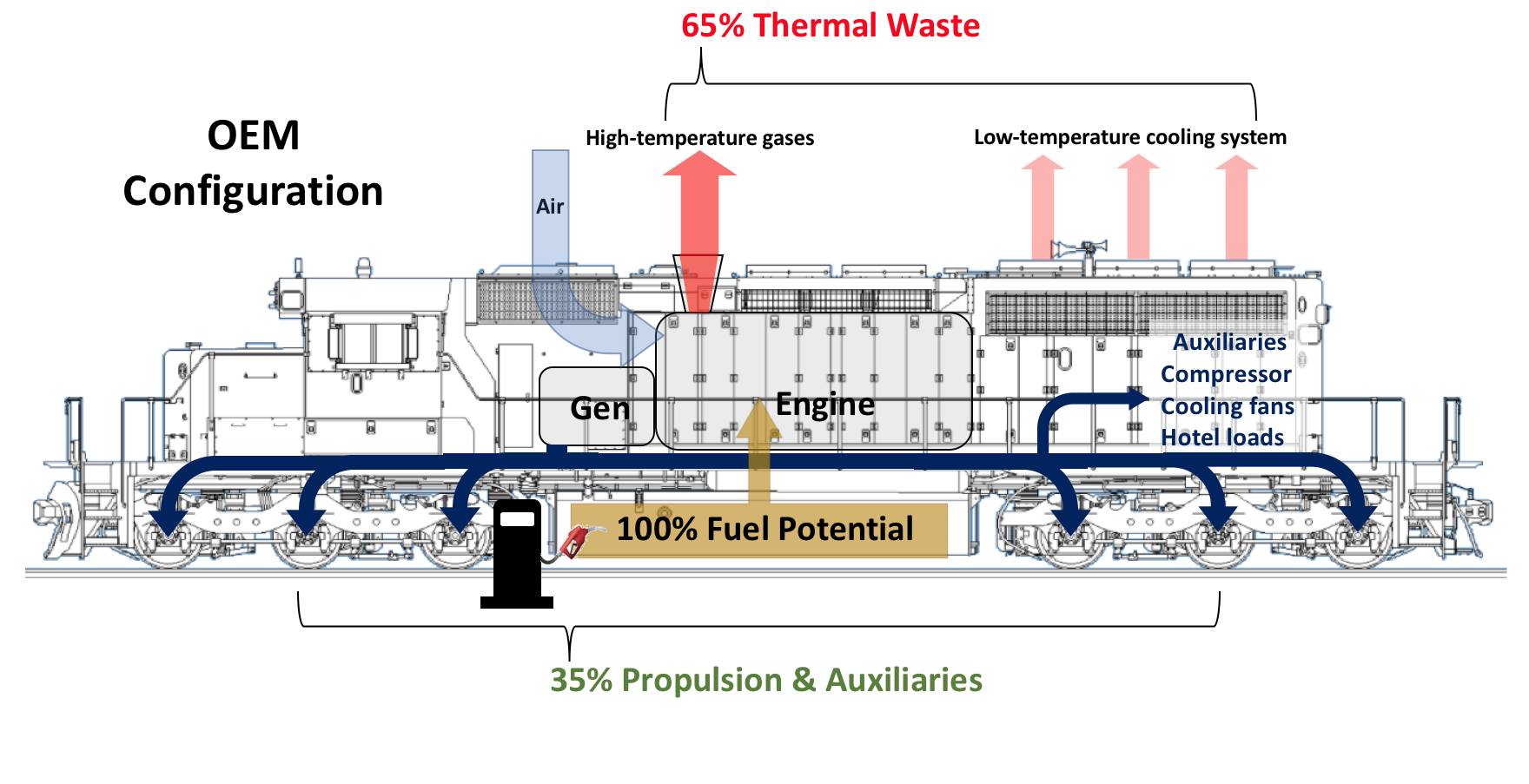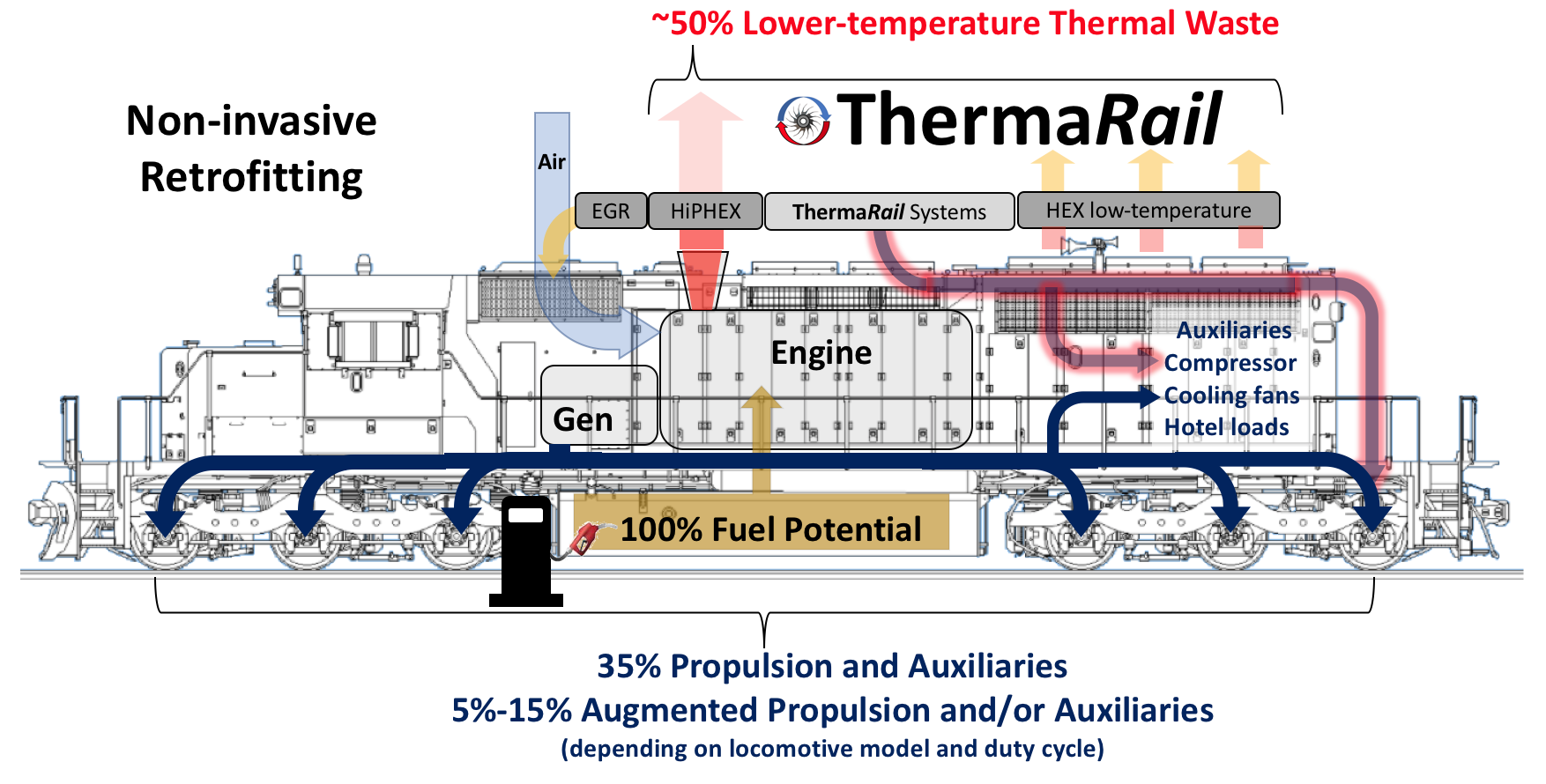Converting MegaWatt Thermal Losses to Pollutant-free Electricity

Fuel is a Significant Operating Expense

Increasing Pollutant Emissions Control

ThermaRail solution for old and new locomotives
Operating Cost and Pollutant Emissions Reductions by non-invasively Retrofitting Aging and New Locomotives
ThermaRail enables aging diesel-electric locomotives to more efficiently produce electric power for propulsion, cabin and hotel loads. Depending on locomotive model and duty cycle, non-invasive ThermaRail retrofitting results in the reduction of fuel consumption and pollutant emissions, thereby supporting or enabling compliance with more restrictive pollutant emission standards. ThermaRail configurations dedicated to the reduction of pollutant emissions enable new locomotives to further reduce pollutant emissions at idle and at low Notch settings.
Cost-effective solutions
ThermaRail non-invasive, scalable, power conversion systems represent a significant opportunity for rail operators to reduce operating cost, while simultaneously decreasing green house gases, particulate matter and thermal emissions.
“Old” locomotives retrofitted with ThermaRail will be enabled to meet increasingly restrictive EPA standards. As less fuel is consumed to produce the same traction power, the locomotive generates a proportionally lower amount of pollutants.
“New” locomotives can further reduce pollutant emissions when a portion of ThermaRail produced electrical energy and reduced temperature of the exhaust gases are dedicated to drive pollutant reduction systems. In these configurations ThermaRail is equipped with features that improve fuel combustion at idle and low notch settings, while lowering exhaust gas temperatures to support Emission Gas Recirculation (EGR) methodologies, thereby reducing costs associated with after treatment emission control technologies.

ThermRail 300 is formed by three enclosures non-invasively coupled to the locomotive external frame. Installation consists of coupling ThermaDynamics Rail High-Pressure Heat Exchanger (HiPHEX) to the locomotive stack (installation requires approximately 20 minutes), followed by the coupling of the balance of Plant, electrical and auxiliaries enclosures (8-12 additional hours to complete installation). Depending on locomotive model and duty cycle, ThermaRail 300 can produce in excess of 300 kW conditioned electricity to be distributed to various electrical loads directly or via locomotive power bus.
ThermaRail 25 is formed by two enclosures (2) and (3) non-invasively coupled to the locomotive external structures, a high-pressure heat exchanger (1) and a radiator (4). In this configuration the HiPHEXs are thermally coupled to the OEM locomotive exhaust stack. ThermaRail 25can be configured to supply 15 kW – 80kW conditioned pollutant-free electric power. ThermaRail enclosures are engineered to protect the waste heat recovery components from vibratory shocks and other operational stressors.

The advantages of retrofitting diesel-electric locomotives with ThermaRail include:
- Lowered fuel consumption for unaltered propulsion power, resulting in reduced operating costs
- Reduced greenhouse gases emissions, due to lowered fuel consumption
- Targeted pollutant emissions reductions by equipping ThermaRail with add-on features to reduce PM
- Reduced thermal rejection to the environment, thus lowering thermal pollution
- Supporting compliance with more stringent EPA pollutant reduction standards without compelling replacement of old locomotives
- Locomotive engine cooling system thermal loading reduction
- Additional electrical auxiliaries entirely powered by ThermaRail
- Power supply/charging of more efficient auxiliary battery systems to off-load the locomotive OEM battery


